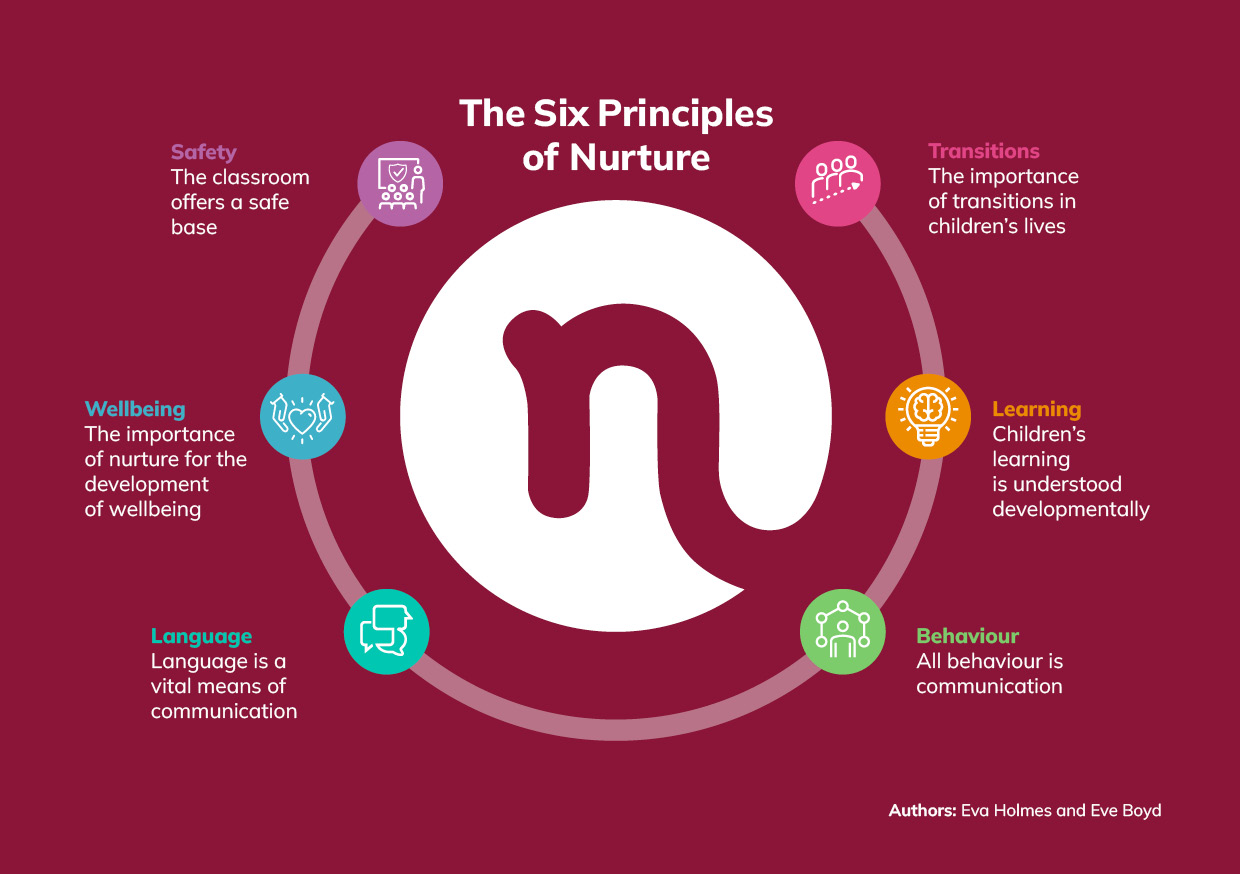The 6 Principles of Nurture at Golden Valley
The team at Golden Valley are currently working towards becoming a Nurture Uk accredited school, with Mr Riordan and Mr Hamilton leading a 2-year project that began in September 2023.
What is nurture?
Nurture is a tried and tested way of relating to children that helps them develop vital social skills, confidence and self-esteem, and become ready to learn.
The concept of nurture highlights the importance of social environments – who you are with and not who you are born to – and its significant influence on social and emotional skills, wellbeing and behaviour.
The nurturing approach to education offers a range of opportunities for children and young people to engage with missing early nurturing experiences, giving them the social and emotional skills to do well at school and with peers, and to develop their resilience and self-confidence. It encourages pupils to take pride in achieving - addressing the social and emotional needs that can hamper learning.
Whole-school approach to nurture
Making the most of the nurturing approach
The nurturing approach to learning makes most impact when it’s not just an intervention, but reaches everyone in a setting. It’s an evidence-based approach to supporting improved behaviour and increased attendance in school, leading to better attainment and reduced exclusions.
The nurturing approach considers how a child’s social environment affects their emotional wellbeing, their social skills, and how ready they are to engage at school and in the wider community.
By building nurture into our school’s culture and everyday work, through our National Nurturing Schools Programme, our team can help pupils to develop the social skills they need to thrive, and the confidence and resilience to deal with whatever life throws at them - at school, and for the rest of their lives.
The six Principles of Nurture that inform school policy and practice

1. Children’s learning is understood developmentally
Children are at different stages of development – socially, emotionally, physically and intellectually – and need to be responded to at their developmental level in each of these areas. Responding to children ‘just as they are’, with a non-judgemental and accepting attitude, will help them to feel safe and secure.
Social, emotional and behavioural development tools such as the Boxall Profile®, help staff to assess and track a child’s needs and put strategies in place to support positive development.
2. The classroom offers a safe base
A classroom environment is inviting and nurturing for all. The classroom offers a balance of educational and social, emotional and mental health experiences aimed at supporting the development of children’s relationships with each other and with staff. Adults are reliable and consistent in their approach to children and make the important link between emotional containment and cognitive learning.
Where possible, predictable routines are explained and practised, and there are clear expectations and positive models of how all adults in school relate to children and young people, both in and out of the classroom. Consider whether your setting is a safe place – physically and emotionally – for your pupils, staff, parents and carers. How do you promote structure and predictability? It is also important that your classroom or nurture space has quiet zones and reflections of home.
3. The importance of nurture for the development of wellbeing
Nurture involves listening and responding; everything is verbalised with an emphasis on the adults engaging with pupils in reciprocal shared activities. Children respond to being valued and thought about as individuals. In practice this involves noticing and praising small achievements – nothing should be hurried.
Provision and strategies should be put in place that promote the welfare and wellbeing of children and young people, as well as staff welfare and wellbeing. Consider how achievements and attainments are celebrated, and what structures are in place to promote the pupils’ voice.
4. Language is a vital means of communication
It is important for children and young people to be able to understand and express their thoughts and feelings. It is also crucial for adults to understand the importance of their own language towards children and young people, and how this can impact them. Children often ‘act out’ their feelings as they lack the vocabulary to name how they feel. Informal opportunities for talking and sharing are just as important as more formal lessons teaching language skills. This enables words to be used instead of actions to express feelings, and imaginative play can be used to help children understand the feelings of others.
It is helpful to provide opportunities for pupils, parents and staff to express their views, and that adults model how to share feelings and experiences. Pupils’ voices should be valued, and language should be assessed, developed and embedded in all aspects of the curriculum at the appropriate level for the child or young person.
Consider how children are taught to recognise emotions and name them in your context. Are they taught to recognise early warning signs of anger or anxiety and use strategies to de-escalate? How do daily routines allow for conversation and sharing of experiences?
5. All behaviour is communication
People communicate through behaviour. It is the adult’s role to help children and young people to understand their feelings, express their needs appropriately, and use non-threatening and supportive language to resolve situations. Our first responsibility in dealing with difficult or challenging behaviour, after safety, is to try to understand what the child is trying to tell us.
The outward behaviour is often the ‘tip of the iceberg’, and so it is important to consider the immediate environment and what occurred just before the incident happened. School events, the time of year, and home circumstances can also give us clues. Adults need to be calm and consistent, and understand that children may communicate their feelings in different ways. Children and young people need to be encouraged to reflect on their behaviour, and understand how to express their emotions appropriately.
This does not excuse the behaviour, but helps us to ask why the behaviour is occurring. Given what we know about this child and their development, what are they trying to tell us? It helps staff to respond in a firm but non-punitive way by not being discouraged or provoked. Having a quiet area to help students to become calm, and giving them time before a discussion can often help, as well as recognising potential triggers and anxieties that could be avoided or reduced.
6. The importance of transitions in children’s lives
Children and young people experience many transitions throughout their lives, and on a daily basis; transitions from home to school, between classes and teachers, from breaktime to lessons, or moving from primary to secondary school. Changes in routine are invariably difficult for vulnerable children and young people, and school staff need to help the child to transition with carefully managed preparation and support.
Pupils should be included in the planning of support, as well as parents and carers where possible, and information should be shared at key transition points. Staff need to understand the emotions that may be triggered by both small and large changes, and children should be pre-warned or reminded about changes in routines, using visual timetables to emphasise this.
Consider periods of transition for your children; is there inexplicable behaviour just before the end of the day? Do staff feel frustrated by pupils who cause disruption as they move around the school? Children and young people may feel calmer if time can be made to discuss how they feel when things change, in an open and honest way, to help them put coping strategies in place.
